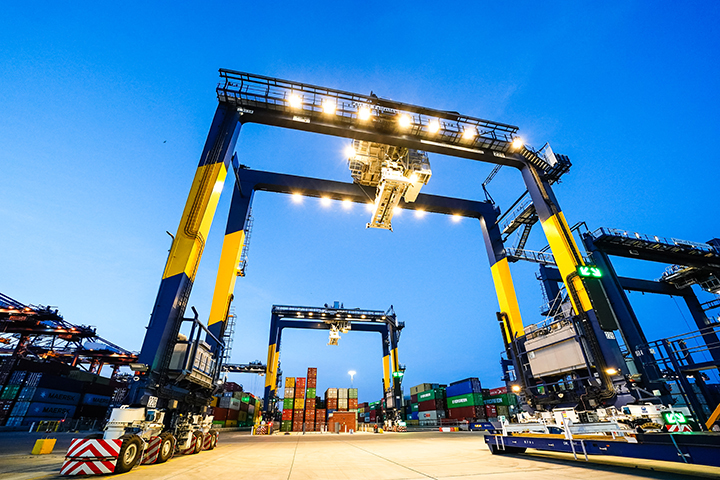Hutchison Ports Port of Felixstowe has announced that it has deployed 5G technology and the Internet of Things (IoT).
The Port of Felixstowe along with consortium members, Three UK, Blue Mesh Solutions and the University of Cambridge, was successful in an application for grant funding under the 5G Testbeds and Trials programme run by the Department for Digital, Culture, Media and Sport (DCMS). The project aims to prove 5G’s capabilities in a busy port environment.
The project seeks to deliver on two use cases: predictive maintenance of quay cranes using Internet of Things (IoT) sensors and providing communications for remote control yard cranes.
“It’s incredible to see our £200 million investment in innovative 5G tech is empowering Britain’s biggest and busiest container port to explore new ways of driving efficiency, improving safety and supporting the UK’s post-Brexit status as a global trading nation,” said Julia Lopez, Digital Infrastructure Minister.
“5G has huge potential to revolutionise a wide range of UK industries and 5G Ports is just one testbed the government is funding to help achieve this.”
“As part of the 5G project, six quay cranes are being fitted with IoT Sensors to understand the stresses and strains placed on them by day-to-day operation,” added Karen Poulter, Head of Information Services, Port of Felixstowe, and 5G Project Lead. “Using 5G to transmit the data enables these systems to operate in real-time which could enable ‘in the moment’ safety-critical applications.
“Using the data generated by the IoT sensors and linking it to the actual activity on the crane together with previous maintenance records, Cambridge University is developing an algorithm to predict equipment failure and suggest the optimum time to maintain the equipment.”
The availability of equipment is integral to port operations. Routine maintenance is an absolute necessity but can restrict equipment availability. The algorithm will maximise the amount of time cranes are in use and will reduce the cost associated with emergency repairs and day-to-day maintenance.
The 5G network can handle the huge volume of data collected which will be used to train the algorithm at levels that wouldn’t be sustainable over 4G.
The project is due to complete in September 2022. Significant work has already been undertaken at the Three lab to test the 5G network against these use cases. Increasing traffic will now utilise the network and prove its capabilities to simultaneously manage the two use-cases and to support the business- critical activities of the port.







